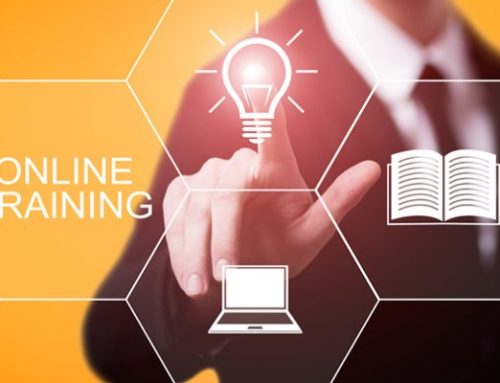Only about one out of every 1,000 new products introduced to supermarkets survives for more than one year. Nearly all are highly thought out concepts their designers and developers were sure filled a need in the market. So what do the successful 0.1% have in common? Along the way some aspect of the product (price, place, or promotion) was modified or adjusted to increase consumer acceptance and/or work around obstacles.
 What’s the link to learning? How many eLearning developers do you know who regard their learners as customers? How many adjust their content or delivery to make it more desirable for their audience? Maybe a few, maybe a little. For-profit educators like University of Phoenix and Kaplan, are learning the hard way that learners behave like consumers. But where consumers vote with their wallets, learners vote with their minds: choosing to open them for good products and close them for bad ones.
What’s the link to learning? How many eLearning developers do you know who regard their learners as customers? How many adjust their content or delivery to make it more desirable for their audience? Maybe a few, maybe a little. For-profit educators like University of Phoenix and Kaplan, are learning the hard way that learners behave like consumers. But where consumers vote with their wallets, learners vote with their minds: choosing to open them for good products and close them for bad ones.
How would a marketer approach eLearning development? Here are six steps they would follow:
- Commit to the concept: All of those who are part of the learning development process need to adopt a learner-centric approach. It starts by assessing and understanding the learner’s strengths, weaknesses and learning preferences, and incorporating them into the design phase. You’ll get a better idea of the full extent of the commitment, as you read through the remaining five development steps. Marketers know they don’t have a product until the market tells them they do, and they know that taking a customer-centric approach is the only way their product is going to survive.
- Know the audience: Most Instructional Designers recognize that on the macro side there is a need to know the general make-up of the target audience; i.e., what characteristics they share, matched against the framework of what they need to learn. On the micro side though, each learner has a unique set of learning preferences that, if properly accommodated, will optimize their acceptance and retention of learning. Designers of web-based marketing understand that one of the most valuable attributes of digital delivery is its ability to customize on the fly and they constantly strive to incorporate more customization into their programs. Marketers equate knowing their audience to preparing a canvas for painting. It may not be the most visible thing in the end product, but it is crucial to a quality course.
- Design to accommodate: As a successfully established eLearning development company, you would think this would be a no- brainer for us, but one of the most difficult and recurring challenges we face is assuring that each program or course accommodates the needs of the entire target audience. The overwhelming propensity, even for experienced designers, is to design and develop to accommodate our own learning preferences. Marketers know they have to get deep into the head of their customers and develop products that optimize individual acceptance.
- Test on the target: Audiences are rarely homogenous. Experienced developers recognize that it’s almost impossible to predict audience reaction to, and acceptance of, a program or course. For them, testing is as important as the content itself: note this action step is “Test on the target”. For testing to be an effective measure it must be done against a representative sample of the target audience. In most learning environments this would generally not include supervisors, randomly available employees or anyone who has participated in the course development. Successful marketers test at multiple points during and after development on their intended target audience.
- Foster feedback: Learning, especially in multi-module courses, is a complex and often extensive intertwining of content and delivery that makes learner feedback and response iterative and often complicated to express. Issues are further compounded by the natural reluctance of evaluators (re: humans) to re-learn material. The more times they are asked to review content, the less thorough they are in critiquing it. It is the developer’s responsibility to create a response mechanism that allows for honest, unfettered and thorough feedback.
- Prepare to modify: The inference made in Step 1 is that 999 of 1,000 products don’t adequately adjust to the needs and demands of the market and therefore fail. In those instances the product, and sometimes the business, is forced to leave the market. Learning programs and courses that don’t adjust to meet the needs of their audience, unfortunately, have a way of lingering. While arrogance may play a small part, there are three prominent reasons learning programs don’t adjust: 1) Lack of planning: Initial budgeting does not accommodate the time, labor and cost of modifications; 2) Limited ability to “course-correct”: Even with good feedback, developers often don’t know the corrective actions that need to be taken, or are not in positions to take them; and 3) Limited awareness of the need to modify: Unless you take a marketer’s approach, the need for modification may not have been part of the planning process.
While these six steps are relevant to all learning development, their greatest impact is felt in the eLearning and blended learning environments. We’ll discuss impact and R.O.I. in future posts, but by considering and implementing these six steps you will be positioning your group as a learning leader and assuring successful programs are successful.
As always, if you have questions or would like to discuss these six steps in the specific context of your learning development situation, you are welcome to send me a note at denzd@illumengroup.com, place “Learning from Marketing” in the subject line.





